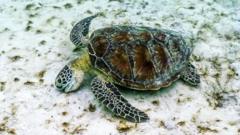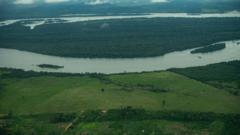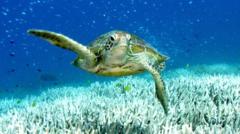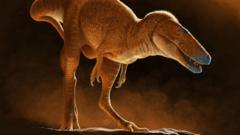Scientists from Conservation International, alongside local indigenous groups, have identified 27 new species, including vulnerable mammals, unique fish, and rare insects.
New Discoveries in Peru: 27 New Species, Including an Amphibious Mouse

New Discoveries in Peru: 27 New Species, Including an Amphibious Mouse
An expedition in the Amazon rainforest has unveiled a diverse array of new species, showcasing the rich biodiversity of Peru.
In a remarkable expedition to Alto Mayo, located within the Amazon rainforest of Peru, researchers have discovered 27 new species, highlighting the significance of this biodiverse region. Conducted by Conservation International in collaboration with local indigenous groups, the expedition uncovered a variety of new life forms, including a unique amphibious mouse characterized by its webbed feet and a bizarre blob-headed fish.
Notably, additional studies suggest that as many as 48 more potential new species could await classification in this protected area, which encompasses diverse ecosystems and indigenous territories. "The discovery of so many new mammals and vertebrates in such a human-altered landscape is astounding," remarked Trond Larsen, senior director at Conservation International.
The Alto Mayo region, known for its rich biodiversity, faces environmental pressures such as deforestation and agricultural expansion, largely due to its relatively high population density. Yulisa Tuwi, a member of the Awajún community who participated in the research, emphasized that this exploration empowers the Awajún people by enhancing their understanding of the natural ecosystems, which are crucial for protecting their culture and territory.
Among the discoveries, scientists identified a new dwarf squirrel species, measuring just 14 cm (5.5 in), which is half the size of an average grey squirrel. Its small stature and lovely chestnut hue make it an adorable find. Furthermore, an array of aquatic life was discovered, including eight new fish species, three types of amphibians, and ten distinct butterflies. One fascinating new fish, characterized by its unusual, enlarged head, was already known to the Awajún people, showcasing the depth of indigenous knowledge regarding their local environment.
This scientific endeavor also spotlighted the discovery of a new species of spiny mouse, named for its stiff guard hairs reminiscent of hedgehogs, further enriching the region's captivating fauna. As the expedition reveals more about the ecosystems within Alto Mayo, it underscores the pressing need for conservation efforts amid increasing human impact.
Notably, additional studies suggest that as many as 48 more potential new species could await classification in this protected area, which encompasses diverse ecosystems and indigenous territories. "The discovery of so many new mammals and vertebrates in such a human-altered landscape is astounding," remarked Trond Larsen, senior director at Conservation International.
The Alto Mayo region, known for its rich biodiversity, faces environmental pressures such as deforestation and agricultural expansion, largely due to its relatively high population density. Yulisa Tuwi, a member of the Awajún community who participated in the research, emphasized that this exploration empowers the Awajún people by enhancing their understanding of the natural ecosystems, which are crucial for protecting their culture and territory.
Among the discoveries, scientists identified a new dwarf squirrel species, measuring just 14 cm (5.5 in), which is half the size of an average grey squirrel. Its small stature and lovely chestnut hue make it an adorable find. Furthermore, an array of aquatic life was discovered, including eight new fish species, three types of amphibians, and ten distinct butterflies. One fascinating new fish, characterized by its unusual, enlarged head, was already known to the Awajún people, showcasing the depth of indigenous knowledge regarding their local environment.
This scientific endeavor also spotlighted the discovery of a new species of spiny mouse, named for its stiff guard hairs reminiscent of hedgehogs, further enriching the region's captivating fauna. As the expedition reveals more about the ecosystems within Alto Mayo, it underscores the pressing need for conservation efforts amid increasing human impact.
















